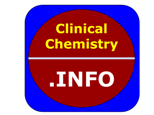Clin Chem. 2025 Oct 10:hvaf122. doi: 10.1093/clinchem/hvaf122. Online ahead of print.
ABSTRACT
BACKGROUND: External quality assessment (EQA) should strive to monitor and reflect variation across laboratories and measuring systems. We introduce a newly developed patient-based EQA program named Noklus Patient Median (NOPAM) that is freely available for the participants. The results from NOPAM enable laboratories to (a) compare their result to their peer group, (b) assess equivalence between measurement procedures, and (c) monitor the long-term median value within a laboratory.
METHODS: Daily instrument-specific medians and percentages of patient results outside reference limits for the measurand in question are sent from laboratories to the program. For a particular grouping within a specific time frame, the program estimates distribution statistics of center and dispersion.
RESULTS: In total, 40 common measurands are included in NOPAM. The 1-year results for selected measurands (alanine aminotransferase, chloride, creatinine, and free thyroxine) for the largest instrument groups are presented. An example of an upward shift for alkaline phosphatase (ALP) for 3 instruments within one laboratory is presented. This shift is notable both for the daily median and the percentage of results above the upper reference limit. However, a corresponding bias is not reflected in the instrument group for ALP.
CONCLUSIONS: A patient-based dynamic EQA program offers several advantages over traditional EQA programs. Among the most significant benefits are the frequent performance monitoring and the elimination of the commutability problems. Our results show that there are important differences between frequently used measurement procedures. NOPAM can be used to monitor standardization and harmonization efforts.
PMID:41071618 | DOI:10.1093/clinchem/hvaf122
